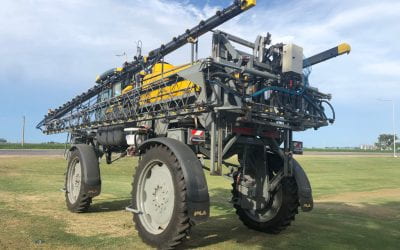Generational Change, Climate Change
Challenges to Agriculture in Santa Barbara, Honduras
My colleague Rubén and I had the opportunity to learn about some very old agricultural production systems in La Cuesta, a rural community about four miles southeast of the city of Santa Bárbara in western Honduras. Farmers here make hats in an artisanal way using a wild plant known as junco, very similar to palm trees that reach up to three feet tall that, when it reaches height, opens like a palm leaf.
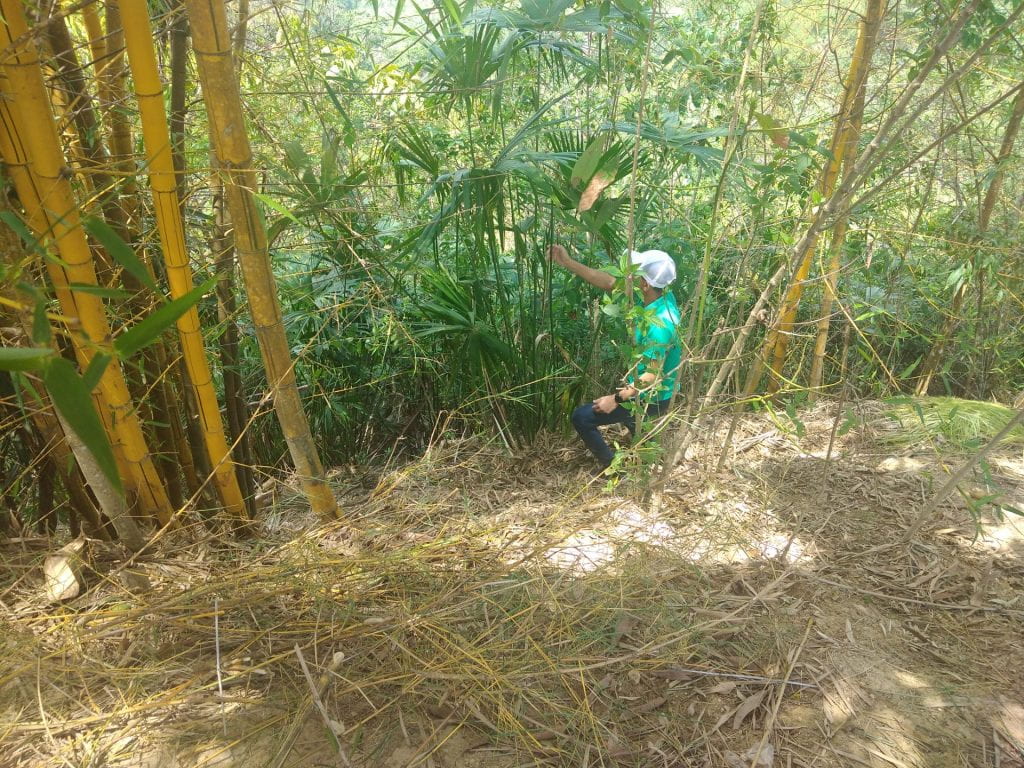
During the 80’s and 90’s, hat-making was a profitable and stable economic activity. Then along came climate change with serious impact, decreasing junco production. Phenomena such as El Niño have affected the natural proliferation of the palm, drastically reducing the availability of the primary material for the hats.
We never imagined all the process and effort that goes into making a junco hat. The artisanal elaboration begins with the stage of cutting the plant, which involves a detailed process of selecting the leaves one by one to find leaves of the same size, softer or more flexible and with ready manipulation; the leaves are arranged on ropes or thin branches to naturally dry. This process is similar to the process of drying tobacco leaves.
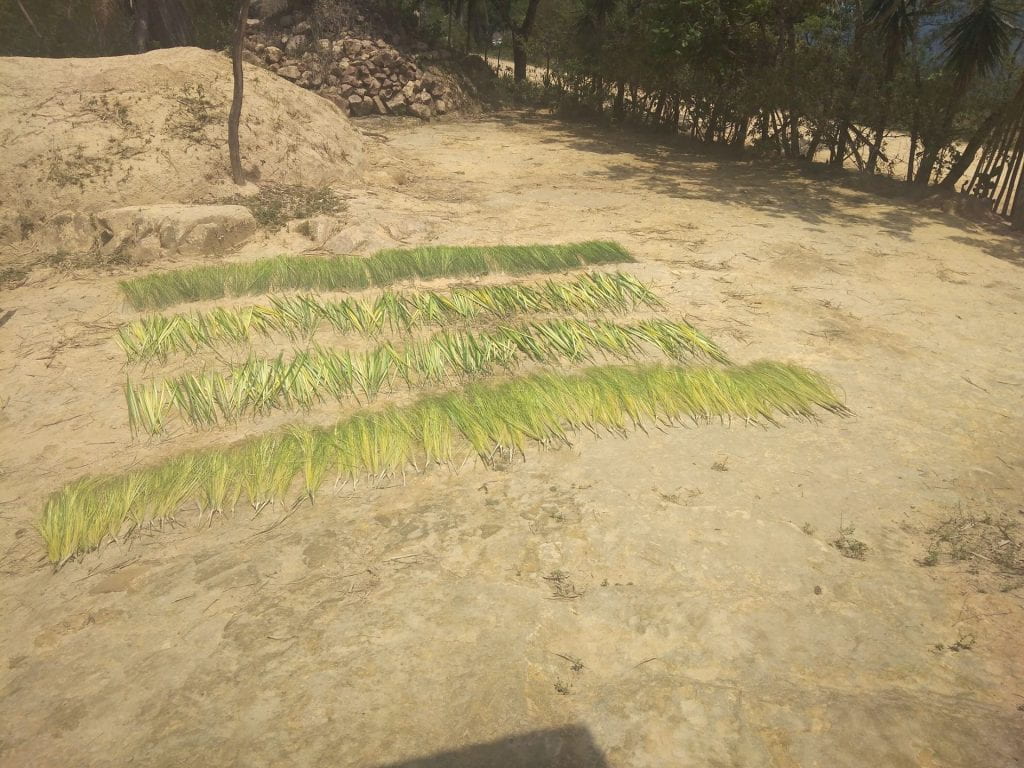
In order to soften the leaf, sulfur is heated using fire produced by wood and the steam makes the leaf dry faster so that it is easier to handle, after this work of elaboration of the raw material, the farmers who oversee the manufacture of hats place molds also of very old ancestral design with different sizes and using molds most in demand in commercial markets.
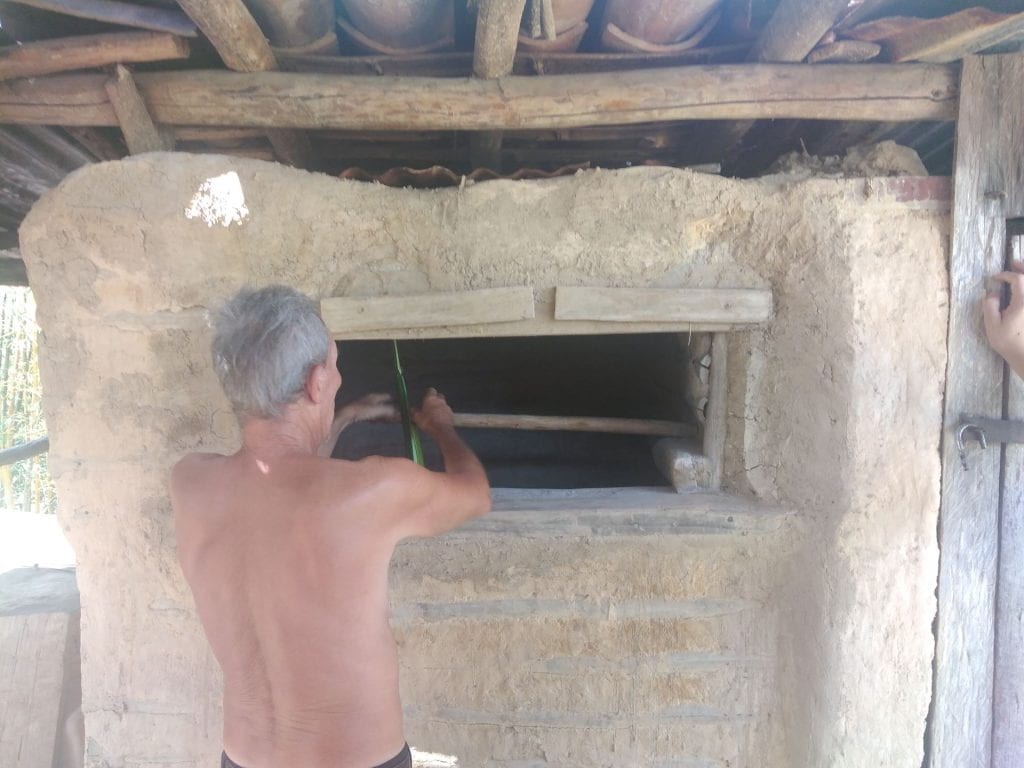
In a second stage, each of the leaves is woven forming a large circle, then molded into a type of structure that simulates a human skull. Only six families are currently making this type of hat, the most emblematic product of the department of Santa Barbara. This is due to a combination of factors: on the one hand, the problem of drought caused by the effects of climate change, which reduces the ability to remanage the plants next door, and on the other hand, by not having employment opportunities, the new generations of young people are forced to migrate to the nearest cities, thus, resulting in leaving manual activity.
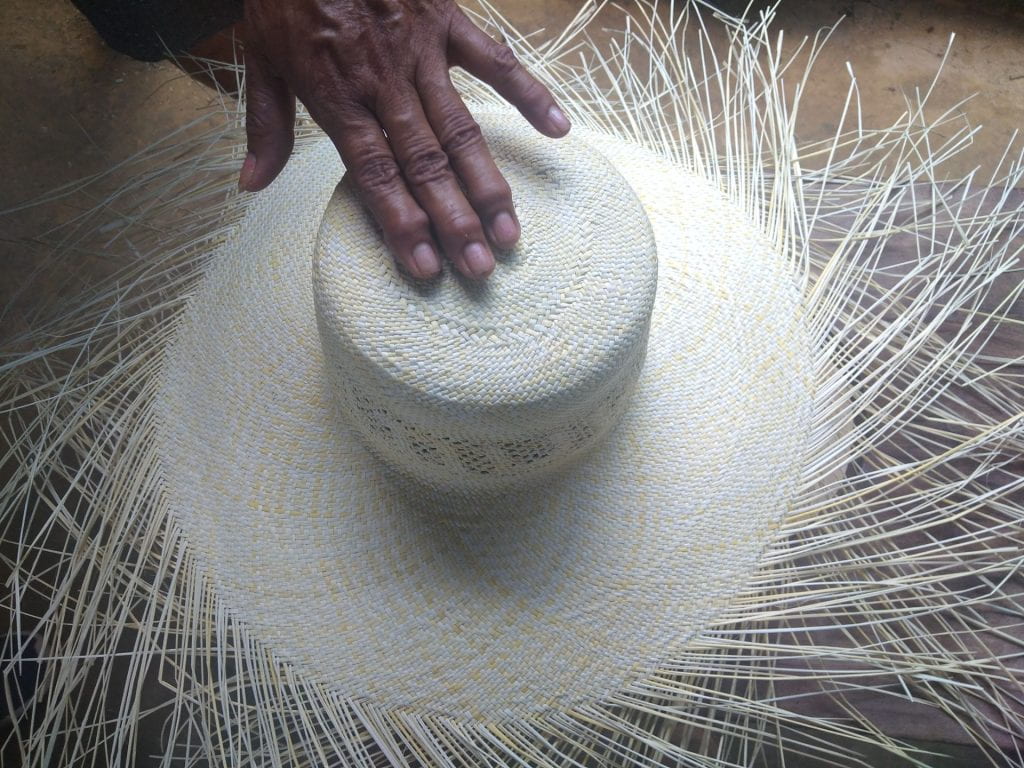
It takes about a week to make a hat, and most of the craftspersons are more than 50 years old. They told us distributors paid them up to $4 per unit, but with the scarce production it has become a very big challenge for the new generations who do not see in this a utility (in this context, utility being an opportunity that is not feasible for the new generations because it is not a profitable activity) nor an activity that can allow them to cover the basic needs of life.
Many young people do consider hat-making to be very beautiful and attractive, but in today’s world it does not represent an income that allows them to cover their needs and that they will hardly think about following the path of agriculture as a way of life. It is unfortunate that the replication of the feelings of young people is multiplying in all the departments of Honduras, because it means that the next generations of farmers will have no successors. The youth population is looking for other alternatives that are easier to develop, less complicated, less expensive and more cost-effective.
There are very challenging alternatives that can help reverse this type of damage: the restoration of water-producing sources that would immediately provide a viable alternative to engage in agriculture, this would also help to recover biological systems, the local ecosystem and would be benefiting the environment, allowing many species of insects responsible for building the natural balance to help restore agriculture. The agricultural zone cultivates coffee as a generalized activity, which is also severely affected by drought and harvests have been reduced, the problem of the reduction of forest cover by shifting cultivation in hillside areas is the most harmful action they carry out in a traditional way to prepare the land, since there is no recharge of the aquifers that previously could capture water vapor for the springs.
The hat market has evolved, demands higher quality and more elaboration, hence the part of the woven hat has remained as a basic activity of raw materials because other artisans make art paintings or customize hats, has become a new trend in this area.
To re-establish the system, it is first necessary to restore surface water sources, develop a management plan for the proper use of the territory and from there use more sustainable methods of production, avoiding clean crops such as corn and beans, which are 43% of the population’s food base, a program of controlled orderly use through forest exploitation certificates, which would allow them to have a more stable income, but requires a whole process of change.
The application of some alternatives, such as regenerative agriculture that creates large rooms for insects, would contribute to improving the ecological balance and balance on farms and would also reduce the management and mechanization of the soil with mechanical traction, which allows an easier crop rotation with a significant reduction in production costs, relying less on imported fertilizers and inputs.
The alternatives proposed allow their families to sustain themselves, leading them to have no interest in leaving their land and not following the path of migration. During our tour of the community, we met enthusiastic young people who still see agriculture as a viable way to develop an economic activity, especially where there is still surface water all year round, allowing young people to improve their income through this economic activity.
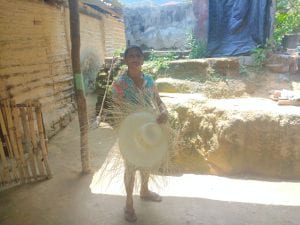
As we finished talking with the hat-makers, farmers and young people, we spoke with the municipal officers. They told us they are aware that the main task is the reconstruction of the mountain life ecosystem, the recovery of the forests, the recovery of water sources. The municipal authorities have as their main activity the mass production of trees that have a greater potential in the production and retention of moisture. We can find a problem and at the same time a solution so that these producers and this ancestral activity that has been widely developed by other generations can then continue to develop.
There is no doubt that we are facing a challenge for adaptation to climate change that will allow new generations of young farmers to continue the legacy of the land and remain in their communities.
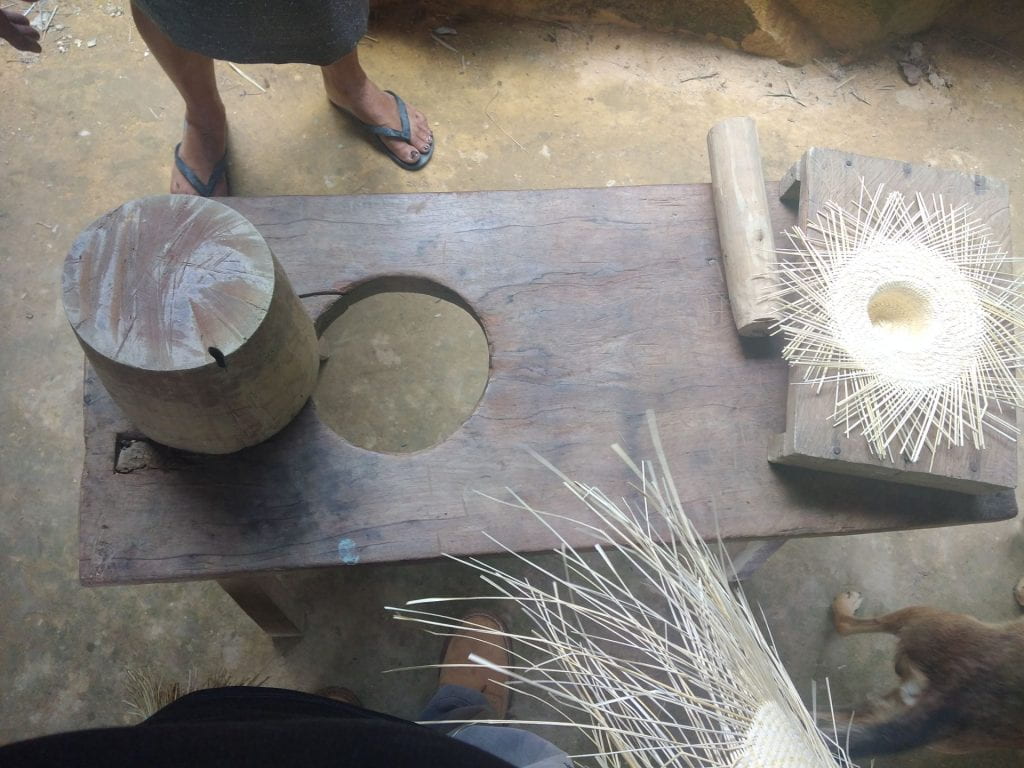
José M. González is a graduate of the National University of Agriculture of Honduras. He holds a Master’s degree in Environmental Economics from CATIE in Costa Rica and has a specialty in Renewable Energy. He has worked for the last 10 years as an environmental and climate change specialist for UNDP, UNEP and the World Bank.
Rubén A. Cruz Valladares is an alumnus of the Harvard Graduate School of Education. He currently works for Chemonics International Inc. in Honduras and has worked as a consultant for the IDB and the IBE-UNESCO.
El cambio generacional
Los Retos del Cambio Climático de la Agricultura
Por. José M. González and Rubén A. Cruz
En un recorrido realizado en el occidente de Honduras, C.A. en uno los municipios, llamado Santa Bárbara en el departamento del mismo nombre, tuvimos la oportunidad mi compañero Rubén y yo de conocer algunos sistemas de producción agrícola muy antiguos, cuya data es ancestral, en una comunidad llamada La Cuesta a unos siete kilómetros al sur este de la ciudad de Santa Bárbara. Se trata de una comunidad rural cuyos productores elaboran sombreros de forma artesanal utilizando una planta silvestre conocida como “junco”, muy parecida a las palmáceas que alcanzan hasta unos 80 cms de alto que, al alcanzar la altura, se abre como hoja de palma.

Durante las décadas de los 80’s y 90’s, la elaboración fue una actividad económica rentable y estable, pero por los efectos del cambio climático de la actualidad sufre el grave impacto disminuyendo la producción silvestre como antes ocurría. Fenómenos como el Niño (ENOS) han afectado la proliferación natural de la palma reduciendo drásticamente la disponibilidad del material primario.
Nunca estuvo en nuestra imaginación todo el proceso y esfuerzo que lleva la elaboración de un sombrero de “junco”. La elaboración de forma artesanal inicia con la etapa del corte de la planta, la cual lleva un detallado proceso de selección de las hojas, de una en una, hasta lograr seleccionar hojas del mismo tamaño, más suaves o flexibles y de mejor manejo; se continúa con el secado de las mismas, usando cuerdas o ramas delgadas donde se acomodan para proceder a un secado natural. Este proceso es parecido al proceso del secado de las hojas de tabaco.

Para poder suavizar la hoja, se calienta azufre usando fuego producido por leña y el vapor hace que la hoja se seque más rápido para que sea más fácil la manipulación, posterior a este trabajo de elaboración de la materia prima, los agricultores que se encargan de la fabricación de sombreros colocan unos moldes también de diseño ancestral muy antiguo con diferentes medidas y usando moldes que más demanda tiene en los mercados donde es posible la comercialización.
En una segunda etapa se empieza a tejer cada una de las hojas formando un gran círculo, el cual se va amoldando en un tipo de estructura que simula un cráneo humano esto es una actividad que realizan muy pocas personas en la zona. Alrededor de seis familias son las que actualmente hacen esta labor tan representativa del lugar. Este tipo de sombrero es el producto más emblemático del departamento de Santa Bárbara.

Al consultarle a las personas que aún se dedican a esta actividad sobre el tiempo que les toma elaborar un sombrero y que en su mayoría son personas con más de 50 años, respondieron que una semana, es el tiempo que abarca todo el proceso.
También se les consultó de cuánto dinero recibían por cada uno de los sombreros y nos comentaron que los distribuidores les pagaban hasta unos $4 por unidad, pero con la escasa producción se ha vuelto un desafío muy grande para las nuevas generaciones que no ven en esto una utilidad, ni una actividad que les pueda permitir cubrir las necesidades básicas de la vida y por tal razón la descartan como un medio de subsistir del cual depender.
Una gran parte de jóvenes consideran que la actividad es muy bonita y atractiva, pero en el mundo actual no representa un ingreso que les permite cubrir sus necesidades y que difícilmente van a pensar en seguir el camino de la agricultura como una forma de vida. Es lamentable que la réplica del sentir de los jóvenes se multiplique a todos los departamentos de Honduras, porque significa que las siguientes generaciones de agricultores no tendrán sucesores. La población juvenil está buscando otras alternativas más fáciles de desarrollar, menos complicada, menos costosas y con mayor rentabilidad.
Existen alternativas muy retadoras que pueden ayudar a revertir este tipo de daños: la restauración de las fuentes productoras de agua que inmediatamente proporcionarían una alternativa viable para dedicarse a la agricultura, también esto ayudaría a recuperar los sistemas biológicos, el ecosistema local y se estaría beneficiando el entorno, permitiendo que muchas especies de insectos responsables de construir el equilibrio natural ayuden a restaurar la agricultura con la simplicidad que se tenía tradicionalmente.
La aplicación de algunas alternativas como la agricultura regenerativa que crea grandes hoteles para insectos contribuiría a mejorar el balance y equilibrio ecológico en las fincas y también reduciría el manejo y mecanización del suelo con tracción mecánica lo que permite una rotación de cultivos de manera más fácil con una sensible reducción en los costos de producción, dependiendo en menor cantidad de fertilizantes e insumos importados.
Las alternativas planteadas permiten el sustento a sus familias, conllevando a no tener ningún interés de abandonar su tierra y de no seguir el camino de la migración. Durante nuestro recorrido en la comunidad, encontramos jóvenes entusiastas que todavía ven en la agricultura una forma viable de poder desarrollar una actividad económica, especialmente donde aun se tiene agua superficial todo el año, permitiendo que los jóvenes puedan mejorar sus ingresos a través de esta actividad económica.
Para finalizar conversamos con las autoridades del municipio y están conscientes que la principal tarea es la reconstrucción del ecosistema de vida de montaña, la recuperación de los bosques, la recuperación de las fuentes de agua. Las autoridades municipales tienen como actividad primordial la producción masiva de árboles que tienen un mayor potencial en la producción y retención de humedad podemos encontrar un problema y al mismo tiempo una solución para que estos productores y esta actividad ancestral que ha sido ampliamente desarrollada por otras generaciones entonces se pueda seguir desarrollando.
Sin duda nos encontramos frente un reto para la adaptación al cambio climático que permitirá que las nuevas generaciones de jóvenes agricultores continúen con el legado de la tierra y se mantengan en sus comunidades.

José M. Gonzalez es graduado de la Universidad Nacional de Agricultura de Honduras. Tiene un Master en Economía Ambiental del CATIE de Costa Rica y tiene una especialidad en Energía Renovable. Ha trabajado en los últimos 10 años como especialista ambiental y de cambio climático para PNUD, UNEP y Banco Mundial.
Rubén A. Cruz Valladares es alumno de la Escuela de Graduados en Educación de Harvard. Actualmente trabaja para Chemonics International Inc. en Honduras y ha trabajado como consultor para el BID y la OIE-UNESCO.
Related Articles
Editor’s Letter: Agriculture and the Rural Environment
From agribusiness to climate change to new alternative crops, agriculture faces an evolving panorama in Latin America and the Caribbean.
Local “sweetening” of the Cocoa Commodity? Alternative Economies in the Peruvian Amazon
The road was nearly impassable again because of the rain.
Agro-technological Revolutions in Latin America
When we speak about a revolution in agriculture in Latin American history, most scholars rightly think of peasant revolts, land tenure struggles or commodification of crops, to name a few of the most salient themes.


